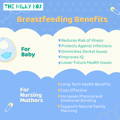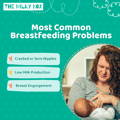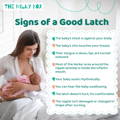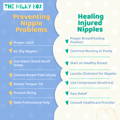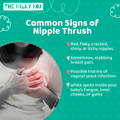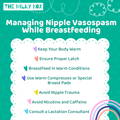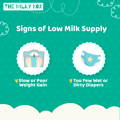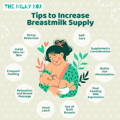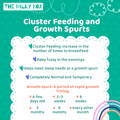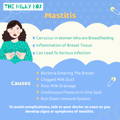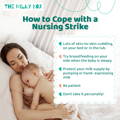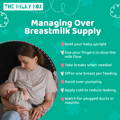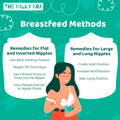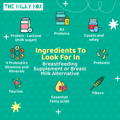Normally, your body makes the right amount of milk for your baby, but in some cases, it may produce too much. This issue often happens early in breastfeeding, especially for first-time moms.
Here are some factors that can cause milk oversupply:
● Sticking to a strict feeding schedule and switching sides too frequently.
● If your baby cries a lot or feels unwell and wants to nurse for comfort, it can make your breasts produce extra milk.
● Expressing milk too frequently in the early days to ensure you have enough milk supply can lead to an oversupply.
● Using a silicone milk catcher to collect leaking milk or relieve the feeling of overly full breasts can remove more milk than your baby needs, causing an oversupply.
● Some moms take medicines or herbs that are supposed to boost milk production, even if it’s not necessary, due to concerns about their milk production or their baby’s hunger.
For those with too much milk, it can have the following effects:
➔ The milk may flow too fast, making the baby fussy, cry, and struggle during feeding.
➔ It can cause the baby to choke, cough, or even bite down on the nipple to control the flow.
➔ Babies may either gain weight rapidly or not gain enough because of the overwhelming milk flow or missing out on calorie-rich hindmilk, which is the term for the richer, higher-fat milk that comes towards the end of a nursing session.
➔ An excess of lactose-rich foremilk, which is the thinner, lower-fat milk that is released at the beginning of a nursing session, can lead to frequent loose, green stools, gas, and fussiness in the baby.
➔ Feedings might be short but frequent because the baby takes in air quickly along with foremilk, missing out on the hindmilk.
If you’re dealing with an oversupply problem, don’t worry; it often gets better on its own. But inform your doctor about it, so they can check for any underlying issues.
Here’s what you can do to manage it:
1. Hold your baby upright while nursing, lean back, or lie on your side.
2. Use your fingers to slow the milk flow by applying pressure to your breast or areola.
3. Let your baby take breaks and burp.
4. Offer one breast per feeding to ensure the baby gets more of the fatty hindmilk.
5. Avoid pumping too much.
6. Apply cold water or ice to your nipples to reduce leaking.
7. Be cautious, as oversupply can lead to plugged ducts and mastitis.


